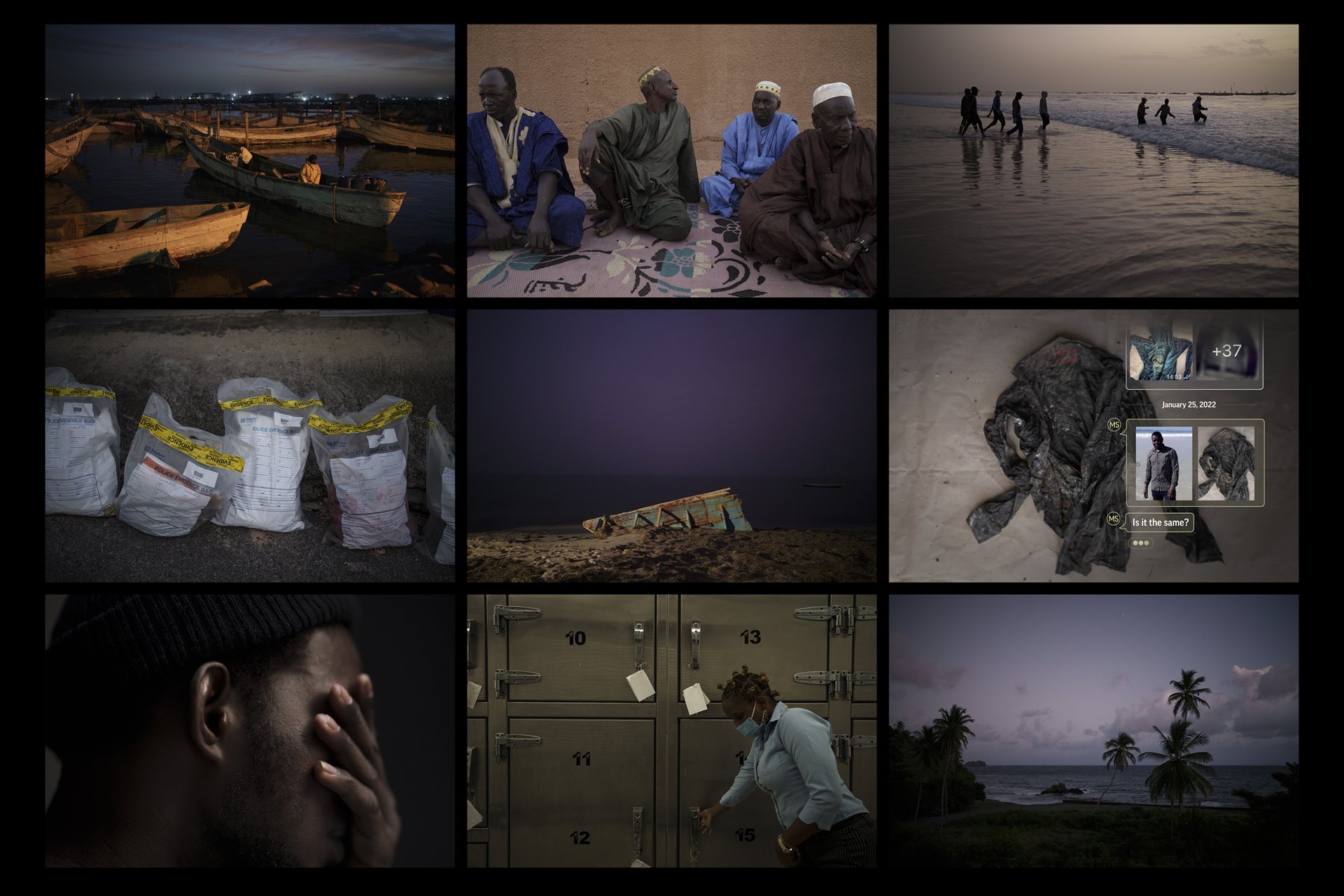Adrift is a digital investigation that combines writing, photography, video and graphics into an immersive presentation that retraces the voyage of 43 people lost in the Atlantic as they tried to reach Europe. The project is accompanied by a 13-minute short documentary that takes viewers behind the scenes of the two-year-long investigation.
Adrift is a digital investigation that combines writing, photography, video and graphics into an immersive presentation that retraces the voyage of 43 people lost in the Atlantic as they tried to reach Europe.
The project is accompanied by a 13-minute short documentary that takes viewers behind the scenes of the two-year-long investigation.
In May 2021 a boat from Mauritania full of dead men was found adrift off the coast of the Caribbean Island of Tobago. Forensic investigation by local police discovered that the boat came from Mauritania, a West African nation on the other side of the Atlantic Ocean. Who were these men and why have they been found so far from home? Two visual journalists sought answers, uncovering a story about migrants from West Africa who seek opportunity in Europe via an increasingly popular but treacherous Atlantic route.
The European migrant crisis has been well documented in recent years. Due to a number of factors including COVID-19 restrictions, new policies implemented by the European Commission, international agreements between the EU and North African nations, and the targeting of search and rescue Non-governmental organizations, the number of migrants and asylum seekers reaching Europe through the Mediterranean route has declined since 2019. Instead, the number of migrants choosing the more treacherous Atlantic route, which runs north along the West African coast to the Spanish controlled Canary Islands, has grown exponentially. Many never arrive; their vessels lost at sea or adrift on dangerous currents that bring these “ghost ships” thousands of miles off course to the Caribbean, where they have been found as far south as Brazil.
Gathering forensic evidence and, with the help of their network of sources across three continents, the reporters tell the stories of 43 people lost in the Atlantic, bringing closure to their families. One of the men identified was Alassane Sow (30). Against the advice of his aunt, Sow got on the Mauritanian boat on the night between 12 and 13 January 2021. The impact of climate change and years of conflict and political instability in Mali led to the failure of his commerce and livestock enterprises; Sow believed that his only path to economic opportunity lay in Europe. DNA testing confirmed his identity, but lack of political will and resources means such resolutions for disappeared migrants are rare.
Photography, cinematography and text: Renata Brito and Felipe Dana, Associated Press | Video Editor: Bram Janssen | Illustration: Peter Hamlin | Motion Graphics: Marshall Ritzel | Creative Direction: Raghu Vadarevu and Nat Castañeda | Design and Development: Linda Gorman, Kati Perry and Dan Kempton
Experience the interactive website.
